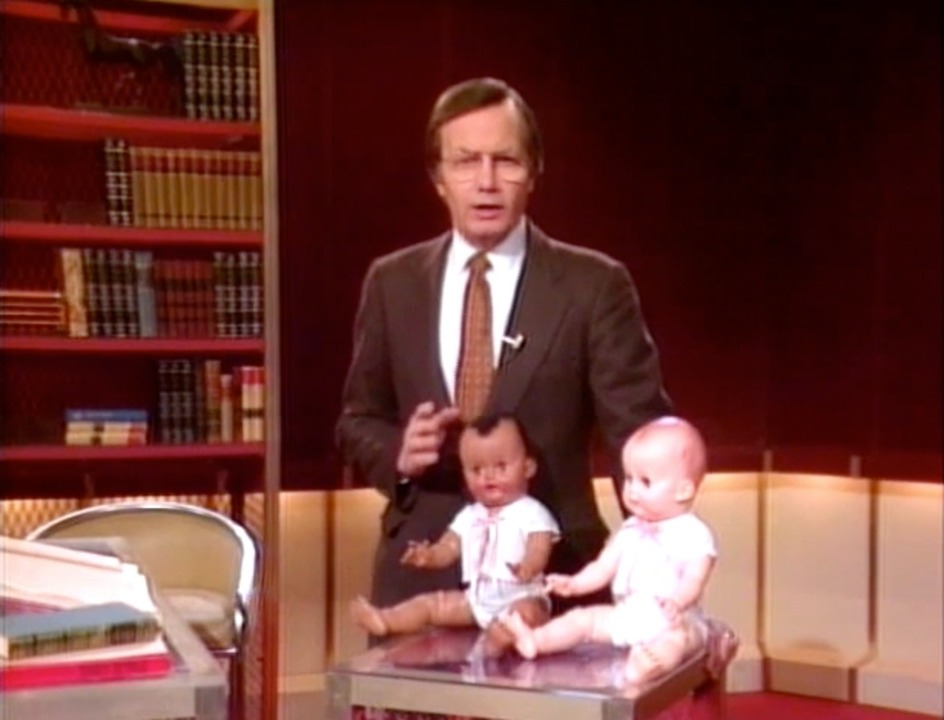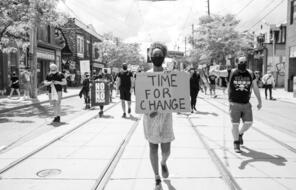What the NAACP set out to prove was simple and straightforward: that forcing children to attend schools restricted to their own race was not only unfair but damaged them psychologically. And two of the witnesses for that position were unusual, to say the least.
Can you imagine what some historian in the faraway future would think to find two dolls like these packed away in an archive, along with the records of the Brown case? Small, silent witnesses, but in the hands of Drs. Mamie and Kenneth Clark, husband and wife and both psychologists, the dolls helped the lawyers to demonstrate how segregation adversely affected the self-esteem of black children.
We put them on a table, two white and two brown dolls, exactly the same in every respect except color. We put no clothes on them except a diaper, and we asked the children a number of very simple questions, starting out with, show me the white doll. Show me the colored doll. Show me the Negro doll.
And after getting the answer to those questions, which would tell us whether they perceived a difference in these dolls, we then asked them preference questions. Such as, show me the doll you'd like to play with. Show me or give me the doll that's a nice doll. Show me the doll that's a bad doll. These were questions designed to determine whether the children had some differentiating responses and attitudes to these dolls, which were identical in every respect except color.
And we found that the majority of black children at that time did, in fact, ascribe the positive characteristics to the white doll and the negative characteristics to the brown doll.
And I'll never forget, because Mamie had to be home with our first child so I did the field work on that. The last disturbing question, after they had indicated their preferences, which, in a sense, were a rejection of the brown doll. I then asked the question, now show me the doll that's like you. Some of those children looked at me as if I were the devil himself for putting them in that predicament.
I remember-- in the North this happened, not in the South, interestingly enough. Northern black children, some of them would run out of the room when I asked them that last question. The difference in the South was that I remember that the black children in the South, for the most part, would look up at me, and some of them would smile.
And I remember one young boy about six or seven years old, when I asked him-- after he had indicated that the white doll had all the good characteristics and the brown doll had all the bad characteristics-- and when I said to him, now show me the one like you, he looked up at me, and he put a curious smile that broke into a laugh. And he said, oh, that's a nigger, I'm a nigger. And that's the way he handled the jolt to self-esteem, by accepting the definition of himself as a nigger with all of the characteristics.
So we wrote that up. You can see why we were reluctant to publish it and had to be forced to publish it. But it was the beginning of psychologists' understanding of the terrible damage that's done to human beings by racial rejection.
The Clarks' testimony was accepted as evidence by the Supreme Court in its findings about the harmful effects of segregation in public education. The court asked, does segregation of children in public schools, solely on the basis of race, even though the physical facilities and other tangible factors may be equal, deprive the children of the minority group of equal educational opportunities? And the court answered, we believe it does.














